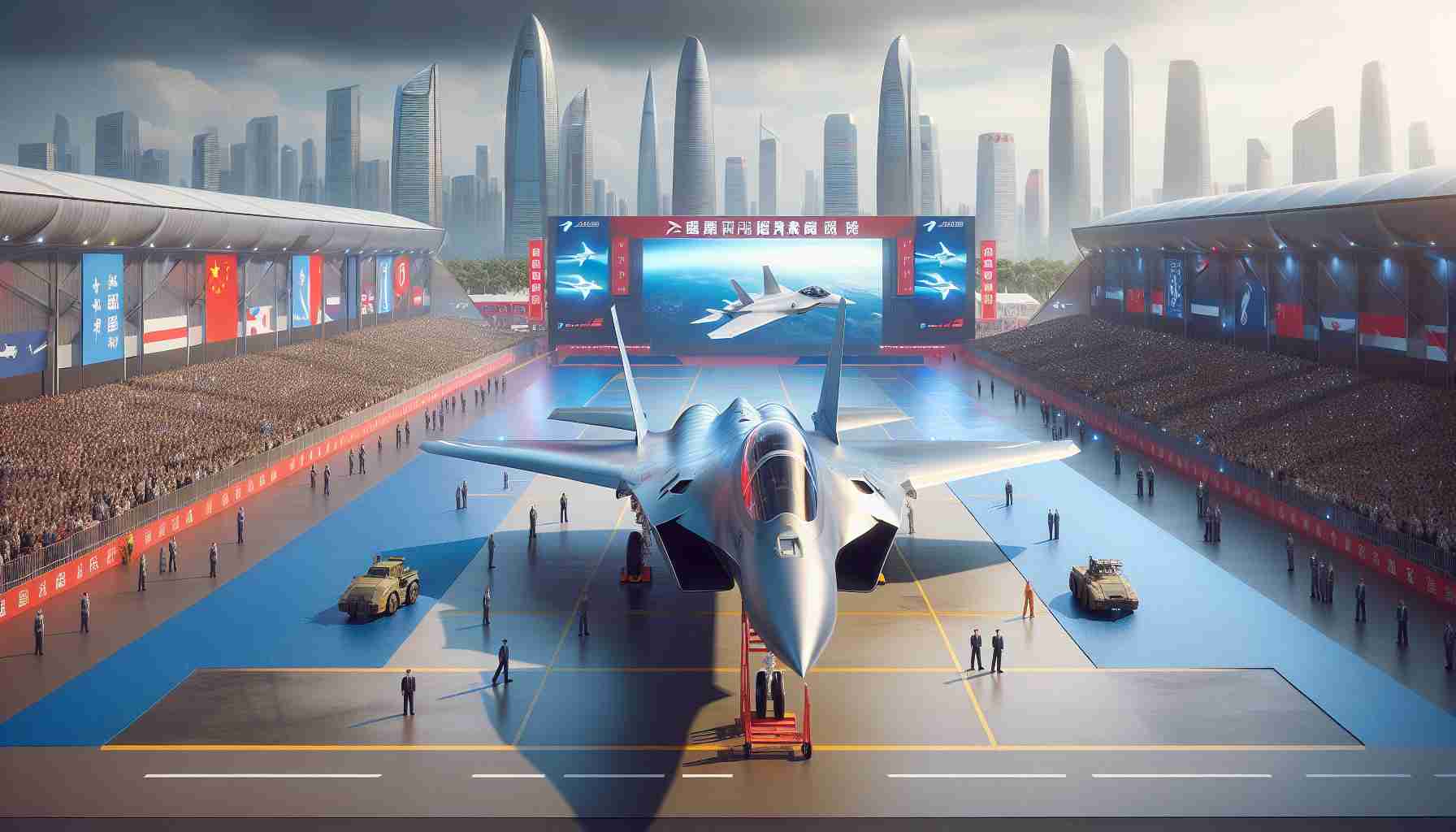The skies over Zhuhai are about to get a lot more thrilling as China’s People’s Liberation Army Air Force (PLAAF) introduces its latest marvel, the J-35A fighter jet. Designed as an economical alternative to the globally recognized F-35, this cutting-edge aircraft is poised to captivate audiences at the Zhuhai Air Show, scheduled for November 12-17, 2024.
Development Journey of J-35A
Initially known as the FC-31 or J-31, the J-35 was crafted by Shenyang Aircraft Corporation with export ambitions. As China’s second stealth fighter, the J-35A signifies a major upgrade for the PLAAF. This variant is distinguishable by unique features such as a single wheel nose gear and larger vertical stabilizers. It proudly sports a special tail logo commemorating the Air Force’s 75th anniversary.
Variants and Features
Distinct from its counterpart designed for the People’s Liberation Army Navy (PLAN), the naval version can operate efficiently from aircraft carriers using a specialized launch bar system. Both versions of the J-35 incorporate advanced technologies, including a chin-mounted sensor system, hinting at similarities with the renowned F-35’s Electro-Optical Tracking System.
International Interest and Capabilities
Globally, countries such as Pakistan have shown keen interest in acquiring this stealth fighter, with potential deals involving 36 units. Equipped with state-of-the-art weaponry like the PL-series Air-to-Air Missiles, the J-35 is poised to revolutionize air combat dynamics next to more established models. As the Zhuhai Air Show approaches, all eyes will be on China’s latest leap in aviation technology.
The Hidden Impacts of China’s J-35A Fighter Jet
The unveiling of China’s J-35A fighter jet not only showcases a significant achievement in aviation technology but also introduces a range of implications and considerations that could reverberate across the globe. While much has been said about its technical allure, the broader impacts on geopolitics, economics, and national defense strategies warrant deeper exploration.
Economic and Strategic Impacts
The J-35A stands as a testament to China’s growing prowess in defense technology, and its economical appeal compared to the F-35 could reshape military budgets across nations. Countries looking to strengthen their air forces without incurring prohibitive costs might find a compelling alternative in the J-35A. Its potential popularity could lead to increased economic ties with China, as nations import not only the aircraft but also engage in related defense technology exchanges and cooperations.
How will this shape strategic alliances? With Pakistan already expressing interest, the J-35A could bolster China’s influence in South Asia and beyond, shifting military dynamics and potentially altering the balance of power. This development could lead to new alliances centered around Chinese technology and expertise, contrasting the traditional Western-oriented defense partnerships.
Technological Controversies
As with any advanced military technology, the introduction of the J-35A stirs controversies. The fighter jet’s technology parallels with the American F-35 raise questions about intellectual property and the lines between innovation and imitation. Critics argue that such similarities could lead to potential legal disputes or diplomatic friction between superpowers.
Environmental Considerations and Community Impact
A less-discussed aspect is the environmental impact of these advanced aircraft. The production and operation of stealth fighters demand substantial resources, contributing to the environmental footprint of military endeavors. Host communities around military bases may experience changes in local economies due to increased activity and potential upgrades in infrastructure, yet they might also face environmental and noise pollution challenges.
Advantages and Disadvantages
Advantages of the J-35A include affordability, advanced stealth capabilities, and strengthened defense options for purchasing nations. However, the disadvantages lie in potential diplomatic strains, ethical debates over technology acquisition, and the environmental cost involved in expanding military capabilities.
Examining Potential Conflicts and Solutions
Could this lead to an arms race in stealth technology? The introduction of a more affordable and advanced stealth fighter could indeed ignite a race among nations to either acquire similar technologies or develop countermeasures, which might escalate tensions or spark innovation. Nations could invest heavily in detecting stealth aircraft, thus advancing radar and sensor technologies, which presents both a challenge and an opportunity for defense strategists.
Balancing Economic Gains with Ethical Considerations: As countries weigh the benefits of acquiring the J-35A, ethical dilemmas regarding technology use, intellectual property, and environmental sustainability will come to the forefront. Transparent dialogues in international forums and treaties might help navigate these concerns, fostering balanced growth in defense technologies.
For more information on military aviation advancements and their global implications, visit Air Force Times or explore defense technology discussions at Defense News.

















